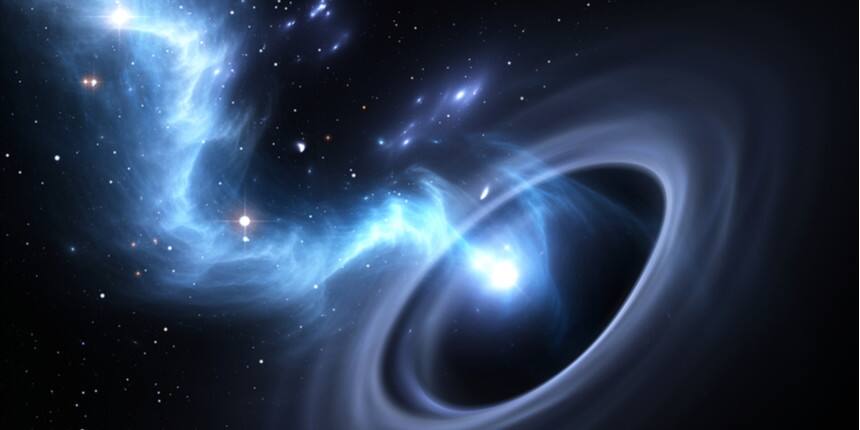IIA study shows how black holes rip stars apart
Pritha Roy Choudhury | September 19, 2020 | 04:42 PM IST | 2 mins read

NEW DELHI: Researchers at the Indian Institute of Astrophysics (IIA) have discovered a model which can deduce the mass of massive black holes and their spin. The model is based on a study which examines the gravitational force at the centre of the black holes and its impact on stars.
The study was T. Mageshwaran's, PhD thesis work at Indian Institute of Astrophysics under the supervision of A. Mangalam, professor at the institute. They developed a detailed semi-analytic model. It studies the dynamics of accumulation and outflow of Tidal Disruption Events (TDEs).
TDEs or Tidal Disruption Events can be described as a phenomenon in which stars are disrupted when the black hole's tidal gravity exceeds the star's self-gravity.
Mageshwaran is now associated with Tata Institute of Fundamental Research as a post-doctoral student.
How it happens
“There is a collection of stars usually around the galaxies and one of these stars, if it is dynamically favourable, goes close to the black hole. It goes so close that the tidal gravity of the black hole dominates over the stars own gravity and this makes the star disintegrate,” Arun Mangalam told Careers360.
To explain it further, “ When the gravitational force of one end of the star is greater than the gravitational force of the star at the other end then the star will be ripped apart. It’s like pulling a ball apart because the gravity on the backside of the ball is lower than the gravity on the front side,” Mangalam added.
Most black holes lead isolated lives and it is impossible to study their nature. Astronomers study them by watching for their effects on nearby stars and gases.
Supermassive black holes govern the movement of stars orbiting within their gravitational potential.
The event can be observed in different electromagnetic bands. “They are actually observed from satellites, ground-based optical and radio telescopes etc. So astronomers see a sort of a trend of the light curve, that is the intensity of light and how it changes,” he added.
“There is a lot of radiation emitted in the process and if it is above a certain limit, it is called the Eddington limit, the material gets evaporated. The model takes into account all these details.”
Studying black holes
Talking about the importance of the study of black holes, Mangalam said, “Once you know about the mass of a black hole, distribution of black hole then you can ask other questions about the universe, like how many black holes are there and how much of the universe is composed of black holes.”
Cosmology and black hole astrophysics are related. They help us understand the universe.
Tidal disruption events happen once in a million years for a single galaxy.
“There are 100 billion galaxies. Statistically, there are a lot of events and so many are detected,” said Mangalam.
Their research was published in the New Astronomy (2020).
Also Read:
- The Week In Education: Several states to keep schools shut till October
- ‘Astronomy just happened’ to first woman to head Astronomical Society
Write to us at news@careers360.com
Follow us for the latest education news on colleges and universities, admission, courses, exams, research, education policies, study abroad and more..
To get in touch, write to us at news@careers360.com.